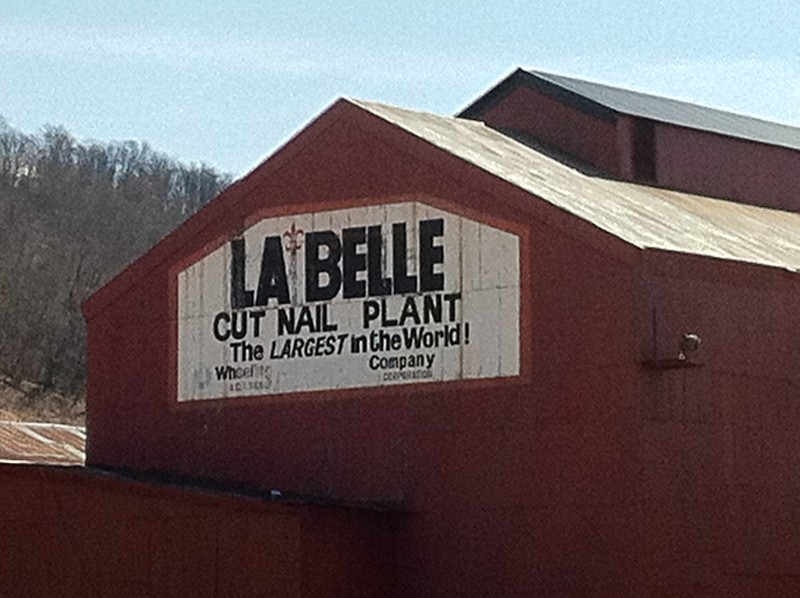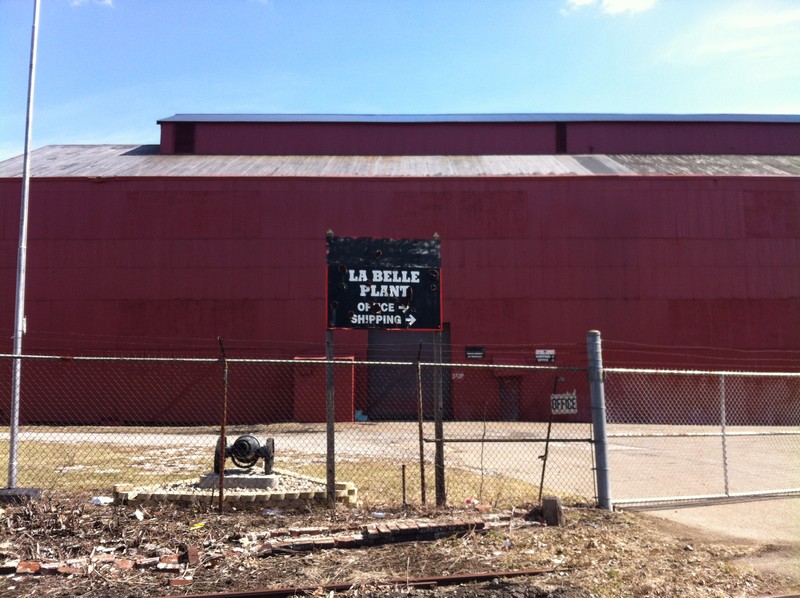LaBelle Cut Nail Plant
Introduction
Text-to-speech Audio
Images
LaBelle Sign Painted on Building

Front Gates

Backstory and Context
Text-to-speech Audio
Two Pittsburgh ironmasters, Dr. Peter Schoenberger and David Agnew, pioneered the
iron industry in Wheeling, and established multiple mills that were fueled by
the local bituminous coal. Their most notable mill was Top Mill, which produced
sheet and bar iron and iron cut nails. Two Pittsburgh nailers, E.M. and George
Norton, worked out of Top Mill, and were influential in the development of most
early mills in Wheeling. The Virginia Mill was established in 1847 by
Stevens, E.M. Norton, John Hunter, William Fleming, and Robert Morrison's newly founded firm of Hunter, Morrison
and Company, and was built specifically for the production of nails. However,
in 1852, the Virginia Mill was completely torn down to make way for the
Baltimore and Ohio Railroad. Other mills had been established by this firm, one
being the Belmont Mill, and eventually another firm was created and
named Bailey, Woodward and Company.
In 1852, Bailey, Woodward, and Company purchased 4
acres of land in South Wheeling two years after the establishment of the Belmont Nail work.
After this purchase, seven out of the eleven board members left
to begin their own nail factory. On the 4 acres, two were to be the the actual
mill and the other two were to be workers houses. Bailey, Woodward and Company chose the name 'LaBelle' from what the French called the Ohio
River, 'La Belle Riviere' which means 'the beautiful river'. Most of the
founding members of Bailey, Woodward and Company were workers of the iron
mills, and were called the puddlers and nailers. The puddlers and nailers were
the elite of the iron industry, and were paid higher salaries that allowed them
to invest in the establishment of mills.
In 1859, LaBelle purchased Jefferson Iron
Works in Steubenville, Ohio. During the Civil War, LaBelle signed a year lease
with Cyrus Mendenhall, the owner of a blast furnace in Martins Ferry, Ohio.
This lease allowed the nails to be produced locally as the furnaces would be operated in Ohio, and then the ore would be shipped down river to
LaBelle. This continued until LaBelle built their own blast furnace in
Steubenville in 1863. In 1874, LaBelle had increased from 25 to 83 nail
machines, and had also built warehouses, a coopers shop, and a stock shed. The plant was running two ten hour shifts each day with 400
employees. This combined with the Jefferson works, who had about 900 employees and a total
of 167 nail machines, Wheeling produced the most nails in the United States.
Between 1885 and 1886, the Great Nail Strike, which lasted for 13 months, caused
the city of Wheeling to be "Nail City". During the
strike, wire nails flooded the market because cut nails were at a shortage. The
workers on strike were replaced by machines which then replaced the need for skill. In 1914, LaBelle Iron Works was
the last nail producer in Wheeling, and in 1920, the Wheeling Steel Corporation was
created with the merger of Wheeling Steel and Iron Company, Wheeling-Glessner,
and LaBelle Iron Works. In 1968, Wheeling Steel Corporation formed with
Pittsburgh Steel Corporation to form Wheeling Pittsburgh Corporation. On
September 30, 2010, LaBelle closed.
